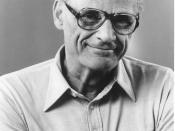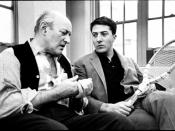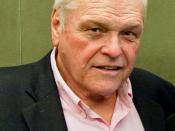NEW YORK "" Death of a Salesman has entered the realm of folk legend over its 50-year existence. But the Goodman Theatre production that opened Wednesday on Broadway elevates it even more: This is King Lear, American style (three and a half out of four).In a portrayal of operatic proportions by Brian Dennehy, the hapless salesman Willy Loman "" who mistakes the American Dream for an automatic reward for well-liked people "" is a workingman's Lear. As his mental breakdown leads to suicide, he acts out archetypal conflicts with his children, rages over perceived injustices and wrestles with a madness-inducing cocktail of vanity and illusion.
Dennehy's bullish physicality couldn't contrast more tellingly with Willy's minuscule social stature. But his smile shows flashes of charm long buried by his tragic flaw: a cantankerousness that leads him to burn bridges at random. Since the play's Chicago run last fall, Dennehy has added an Oedipal color: As much as he loves his charismatic but aimless son Biff, their confrontations leave him cowering, as though fearing for his life.
It could have been just Dennehy's show. But director Robert Falls has inspired the cast to deliver fearless emotionalism and wreck-the-room volatility. As his wife, the remarkable Elizabeth Franz represents Willy's psychological reverse: She sees, understands and feels all the dreadful things that his madness spares him.
The only false step comes with the two sons. Individually, they're excellent "" Kevin Anderson (Biff) with his fallen-angel looks and sense of devastated emasculation, and Ted Koch (Hap), whose empty bravado grows creepier as the play goes on. Together, though, there's little sense of the camaraderie that leads to their crucial if temporary alliances.
Staged on two concentric turntables, the production has a fluidity that allows the play to move easily between memory, fantasy and reality. One marvels anew at playwright Arthur Miller's ability to meld it all. Besides taking on huge issues with dramatic confidence, he adds new characters in Act Two (always a dangerous practice) with great cumulative effect. Herein lies the acid test for any cast: Even the smallest roles require conceptual and technical mastery, and here they get it.





